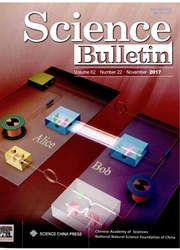

 中文摘要:
中文摘要:
在东方 Qinghai 西藏的高原上的一块高山的草地的表面精力交换的季节的可变性用旋涡协变性大小被调查。基于空气温度的变化和降水,一个冬季季节和湿季节的季节的分发被识别,它被过渡时期分开。年度吝啬的网放射(R < 潜水艇 class= “ a-plus-plus ” > n ) 是大约 39 ? 年度吝啬的太阳的放射的 %(R < 潜水艇 class= “ a-plus-plus ” > s ) 。 R <潜水艇class=“ a-plus-plus ”> n 在冬季季节期间是相对低的( 21 ? R 的%<潜水艇class=“ a-plus-plus ”> s )与湿季节相比( 54 ? R 的%<潜水艇class=“ a-plus-plus ”>能被解释的 s ),由在在二个季节之间的表面反照率和潮湿状况的差别。每年,网放射的主要消费者是潜伏的热流动(LE ) 。在冬季季节期间,因为冻结的土壤条件和降水的缺乏,理智的热流动(H) 是主导的。在湿季节期间, LE 花费了 66 ? R 的 %< 潜水艇 class= “ a-plus-plus ” > n 由于相对高的温度和足够的降雨结合了植被生长。叶区域索引(LAI ) 在在湿季节期间划分的精力上有重要影响。高 LAI 由于高土壤水内容(< 潜水艇 class= “ a-plus-plus ” > v ) 贡献了高表面传导力(g < 潜水艇 class= “ a-plus-plus ” > c ) 和 LE,和这样低的鲍恩比率() 。LE 被 R 强烈控制 < 潜水艇 class= “ a-plus-plus ” > 从 6 月的 n 到 8 月什么时候 g < 潜水艇 class= “ a-plus-plus ” > c 并且 < 潜水艇 class= “ a-plus-plus ” > v 高。在过渡时期期间, H 和 LE 将近同等地处于精力平衡被划分。结果也建议土壤的 freezethaw 条件和降水的季节的分发在这块高山的草地在精力交换上有重要影响。
 英文摘要:
英文摘要:
The seasonal variability in the surface energy exchange of an alpine grassland on the eastern Qinghai- Tibetan Plateau was investigated using eddy covariance measurements. Based on the change of air temperature and the seasonal distribution of precipitation, a winter season and wet season were identified, which were separated by transitional periods. The annual mean net radiation (Rn) was about 39 % of the annual mean solar radiation (Rs). Rn was relatively low during the winter season (21% of Rs) compared with the wet season (54 % of Rs), which can be explained by the difference in surface albedo and moisture condition between the two seasons. Annually, the main consumer of net radiation was latent heat flux (LE). During the winter season, sensible heat flux (H) was dominant because of the frozen soil condition and lack of precipita- tion. During the wet season, LE expended 66 % of Rn due to relatively high temperature and sufficient rainfall cou- pled with vegetation growth. Leaf area index (LAI) had important influence on energy partitioning during wet season. The high LAI due to high soil water content (θv) contributed to high surface conductance (go) and LE, and thus low Bowen ratio (β). LE was strongly controlled by Rn from June to August when gc and θv were high. During the transitional periods, H and LE were nearly equally parti- tioned in the energy balance. The results also suggested that the freeze-thaw condition of soil and the seasonal distribution of precipitation had important impacts on the energy exchange in this alpine grassland.
 同期刊论文项目
同期刊论文项目
 同项目期刊论文
同项目期刊论文
 期刊信息
期刊信息
